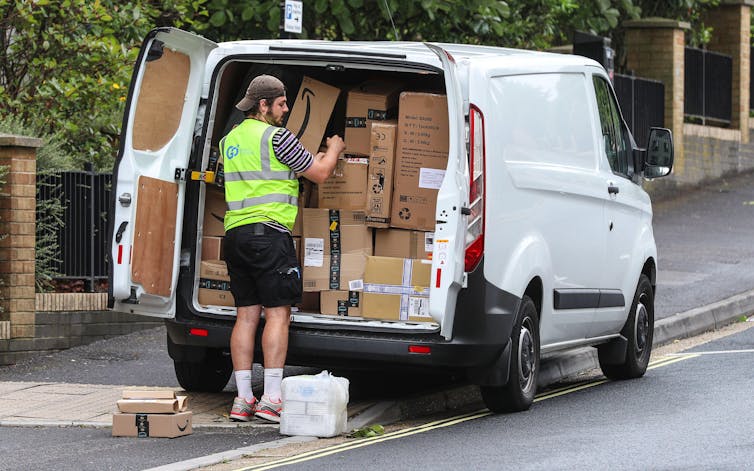When the shared parental leave scheme was introduced to UK workplaces six years ago, the intention - rightfully – was to get both parents involved in early childcare. Quite how this policy has panned out, though, has not resulted in greater gender equality. Instead, observers – from Maternity Action and the Fawcett Society to the National Childbirth Trust and the Trades Union Congress – are calling for urgent reform.
While the UK government argues for a more equal division of childcare duties, the manner in which the policy was designed suggests it is unwilling to challenge the expectation that mothers provide primary care for young children.
The government’s own predictions are telling. The Department for Business Innovation and Skills estimated in 2013 that out of the 285,000 eligible couples, take-up might be as low as 2% each year. If the data was clear, why was a policy this flawed implemented?
Glaring omissions
Despite the widely evidenced benefits of the father’s involvement to the child’s development, and despite the proven improvement to the quality of the parental relationship, shared parental leave was designed with glaring omissions.
The policy excluded self-employed parents and workers on zero-hours contracts and from agencies. However, workers in these categories contribute significantly to the UK economy. It is unfair for them to be treated differently.

Another key barrier to the scheme has been the financial cost it generates for parents. Under the current system, it paid at the basic rate – just shy of £150 a week. Some employers enhance the pay, but this is not mandatory. Aviva, for example, offers its UK staff the right to a full year off work, including 26 weeks on full pay, regardless of their sex. As a result, the company saw over 99% of new fathers among its workforce taking parental leave, with 84% taking at least six months in 2020.
A further hurdle is that many employers and employees both simply do not fully understand the bureaucratic process involved. Most employers have not made their staff aware of the scheme, leading to employees being none the wiser.
Practical hurdles for women
The policy requires mothers to give consent before a father can take shared parental leave. This automatically undermines fathers’ rights as equal parents. It endorses the cultural perception of fathers as breadwinners and the mothers as caregivers.
Also, in 2016, the My Family Care report suggested that few people take advantage of the scheme because mothers don’t want to share their leave. Over half of the mothers (55%) in their sample (of 1,000 parents) said they did not want to share their maternity leave with their partners and 60% of men strongly agreed that partners would prefer to take all the leave themselves.
However, research shows that it’s not that mothers don’t want to share. Rather, several reasons make sharing unattractive. These include breastfeeding difficulties, the financial cost, health concerns after birth for both the mother and baby, and the impact on fathers’ careers.

There has been a noted decline in the number of working mothers returning to work early after birth, with many choosing to delay as much as they are able to.
Returning early negatively affects women’s ability to start infant feeding and to keep it up. There is the option of expressing breast milk, but without a national policy on breastfeeding, there is a notable lack of workplace support. Most do not provide, for example, private rooms with sockets or fridges to enable expressing milk during office hours.
Discrimination against same-sex male couples
Shared parental leave policy also isn’t clear on the position for same-sex couples. The length of paid leave that same-sex male couples can have compared with both same-sex female and mixed-sex couples seems to be disproportional.
Policymakers might want to explain that mothers should have more time, healthwise, to recover after birth. But when considering gender equality, equal parenting and its effect on both the child and the couple’s relationship remains a crucial element and should take priority. Male same-sex couples and their children shouldn’t be discriminated against because of their gender, which goes contrary to the purpose of achieving gender equality at home and in the workplace.

Reforms needed
The UK should learn from places such as Sweden, which has the highest amount of paternal leave. Each parent is given 240 days paid leave, at about 80% of their salary (plus bonus days in cases of twins), 90 days of which are reserved for each parent and are non-transferable.
Contrary to the UK, where the scheme is only available for the first year of the child’s life, parents in Sweden have up to eight years to take that leave. Sweden also has one of the highest rates of breastfeeding in the world. The UK, by contrast, has one of the lowest.
Although the purpose of shared parental leave remains essential, the policy itself requires a complete overhaul. It needs to be made less complex and less bureaucratic. Each parent should be given an independent and non-transferable tranche of paid leave. And the pay should be increased, to encourage more parents to take advantage of it.
Shared parental leave should also be made available from the birth of the child, and applicable to all working parents. The terminology used in the policy should be made clearer too, to ensure that same-sex couples are not disadvantaged in any way.


